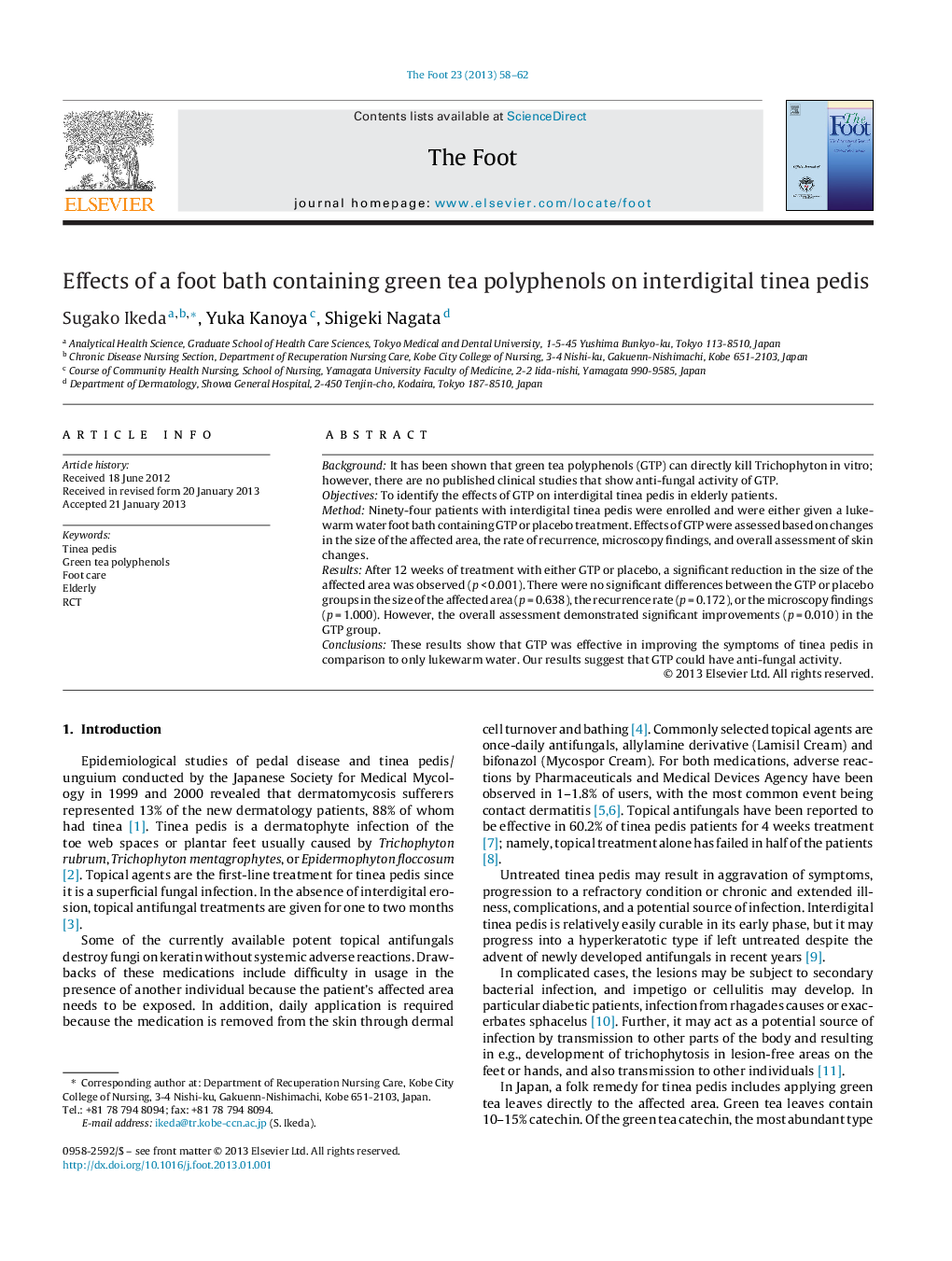| Article ID | Journal | Published Year | Pages | File Type |
|---|---|---|---|---|
| 2721343 | The Foot | 2013 | 5 Pages |
BackgroundIt has been shown that green tea polyphenols (GTP) can directly kill Trichophyton in vitro; however, there are no published clinical studies that show anti-fungal activity of GTP.ObjectivesTo identify the effects of GTP on interdigital tinea pedis in elderly patients.MethodNinety-four patients with interdigital tinea pedis were enrolled and were either given a lukewarm water foot bath containing GTP or placebo treatment. Effects of GTP were assessed based on changes in the size of the affected area, the rate of recurrence, microscopy findings, and overall assessment of skin changes.ResultsAfter 12 weeks of treatment with either GTP or placebo, a significant reduction in the size of the affected area was observed (p < 0.001). There were no significant differences between the GTP or placebo groups in the size of the affected area (p = 0.638), the recurrence rate (p = 0.172), or the microscopy findings (p = 1.000). However, the overall assessment demonstrated significant improvements (p = 0.010) in the GTP group.ConclusionsThese results show that GTP was effective in improving the symptoms of tinea pedis in comparison to only lukewarm water. Our results suggest that GTP could have anti-fungal activity.
